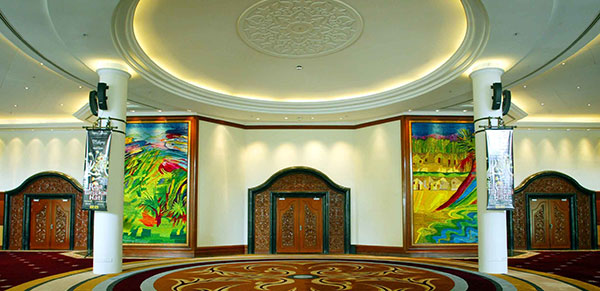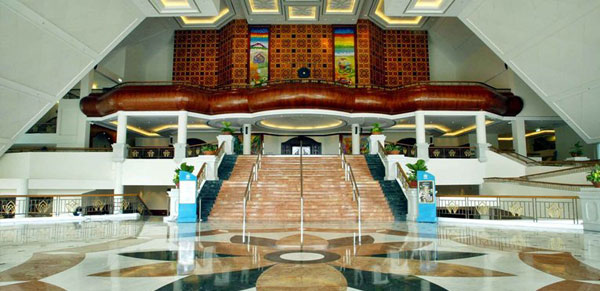Since 1964, the Ministry of Information and Broadcasting and the Ministry of Culture and Social Welfare have submitted proposals to build the National Cultural Center of Malaysia. The proposed initial site is in Lembah Pantai which is located between the Malaysian Broadcasting Center and the University of Malaya.
The National Cultural Center is planned to create a cultural complex that includes other components, namely the History Museum, National Art Gallery, National Planetarium, Main Theater, restaurant chain and cultural art shopping malls.
In 1971, the National Cultural Congress made plans and discussions on the establishment of the National Theater. As a result, in 1972, the National Cultural Group (KBN) was established under the Arts Promotion Branch, Culture Division, Ministry of Culture, Youth and Sports (KKBS) and moved on an amateur basis.
KBN office is located at Wisma Keramat but all cultural activities or arts activities are carried out in a house in Jalan Ampang until the end of 1973, KBN moved to the National Cultural Complex in Jalan Tun Ismail which is the location of the Academy of Arts, Culture and National Heritage (ASWARA) today.
Beginning in 1974, KBN became active professionally under the Arts Development Branch, Culture Division (KKBS) but the focus was more on dance and traditional music. Then, in 1982, the Young Symphony Orchestra (OSM) was formed and in 1992, the National Choir Group was formed.
Next in 1993, the construction of the Experimental Theater (ET) at the National Cultural Complex began and in the same year, OSM was upgraded to the National Symphony Orchestra (NSO) which was launched on 28 August.
In 1994, the Experimental Stage (ET) was inaugurated by the then fourth Prime Minister of Malaysia, YABhg Tun Mahathir Mohamed. KBN is the National Theater Division under the Ministry of Culture, Arts and Tourism (KKKP). In the same year, the construction of the National Theater was realized starting with the work of site determination, selection of building design and financial planning.
The construction of ET, together with the existence of the Tunku Abdul Rahman Auditorium at the Malaysian Tourism Information Center (MATIC) in Jalan Ampang is an attempt to gain experience in administering a National Theater in the future.
Construction of Panggung Negara Malaysia began in July 1995 at a cost of RM210 million covering 5.44 hectares and a floor area of 21,000 square meters. As soon as the construction was completed on 1 December 1998, the administration of Panggung Negara moved to a permanent premises at Jalan Tun Razak. A year later, on September 15, 1999, history was made when the National Theater was officially known as the Istana Budaya.

The uniqueness of ISTANA BUDAYA architecture is based on the concept of several aspects of Malay culture. If seen from above, the ISTANA BUDAYA building is shaped like a Kelantan kite. The shape of the building is like sirih junjung, which is the symbol of the initiator of the ceremony which is often used in Malay wedding ceremonies and welcoming ceremonies.
The building has the concept of a Malay house with three main parts – a foyer for the lobby, the mother house for Panggung Sari, as well as a kitchen house for the main stage and rehearsal hall. While the stairs to Panggung Sari use the concept of the traditional stairs of the Malay house of Melaka

Panggung Sari is able to accommodate 1408 people at a time, including 788 people (1n the Balai Sari Penghadapan located on the first floor. While Balai Sari Utama can accommodate 328 on the second floor and 292 people at Balai Sari Peninjau on the third floor. All seats are numbered. There are small lights on the floor to make it easier for spectators to identify their seats.

The main entrance to Panggung Sari symbolizes the main entrance to Balairong Seri Istana Kesultanan Melayu in the past. The theater lobby on the third floor resembles the design of a rebana ubi, a traditional Malay drum. Once you are in Panggung Sari, it is as if you are in a palace in the past. Anjung dignitaries on the right and left use the concept of Malay house windows.
ISTANA BUDAYA
Kementerian Pelancongan, Seni Dan Budaya Malaysia
Jalan Tun Razak,
50694 Kuala Lumpur